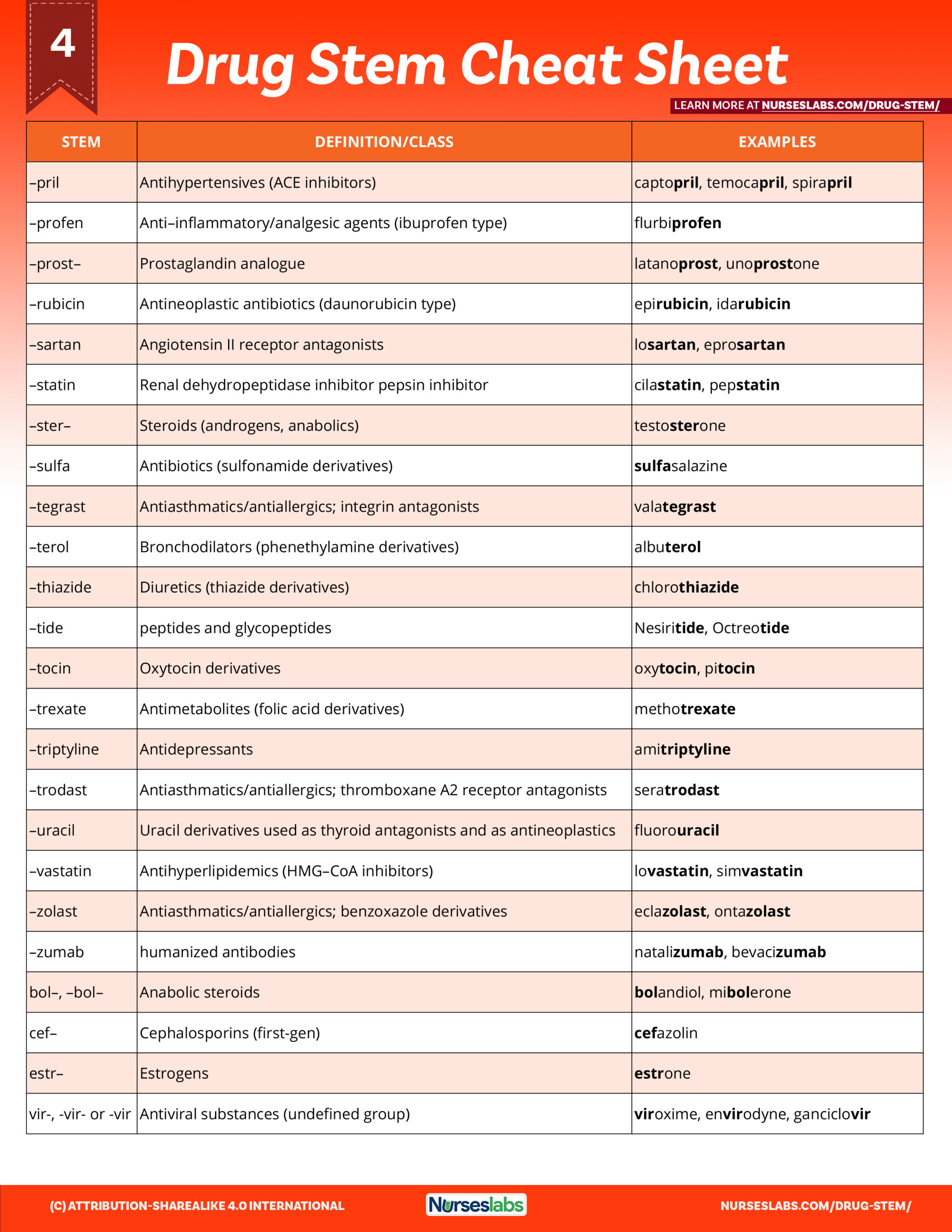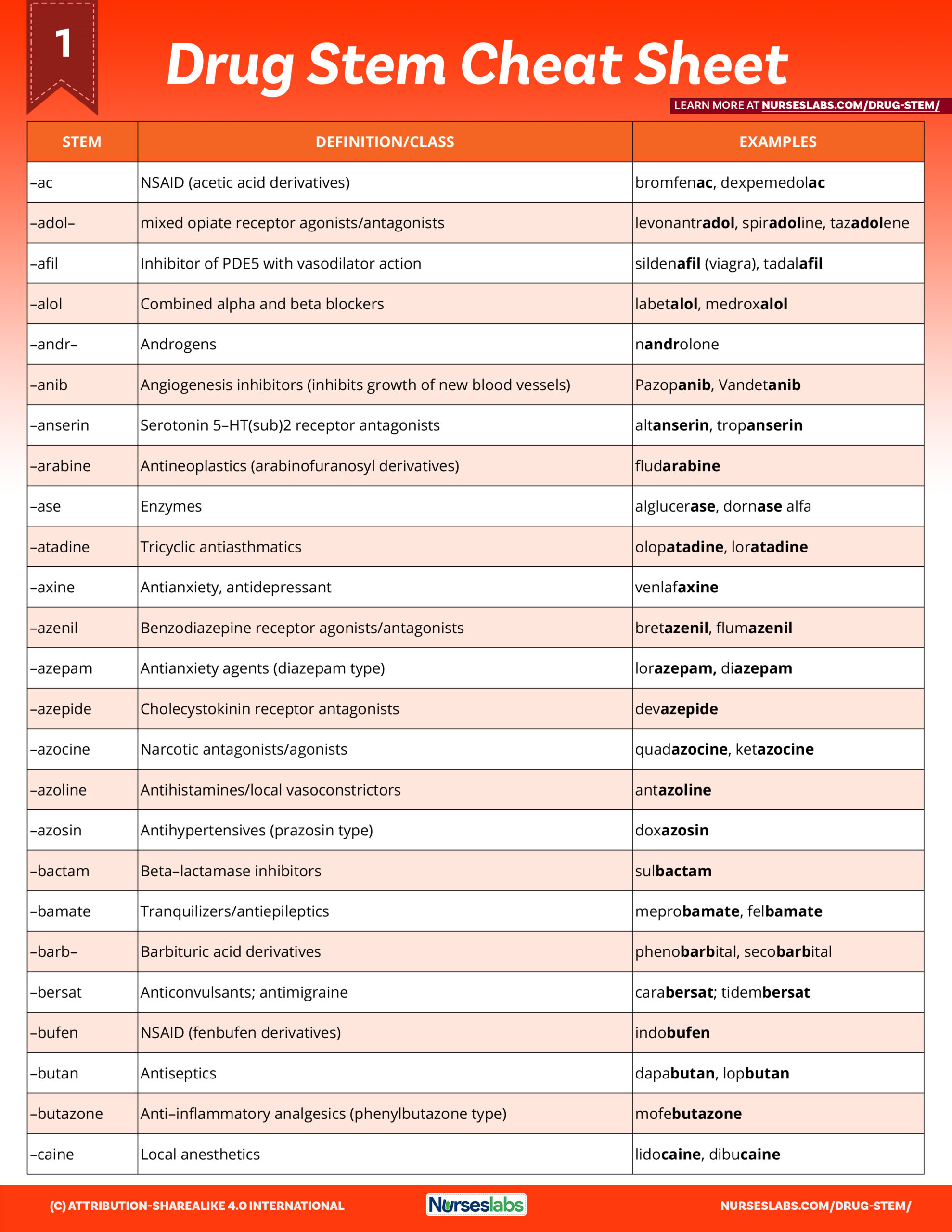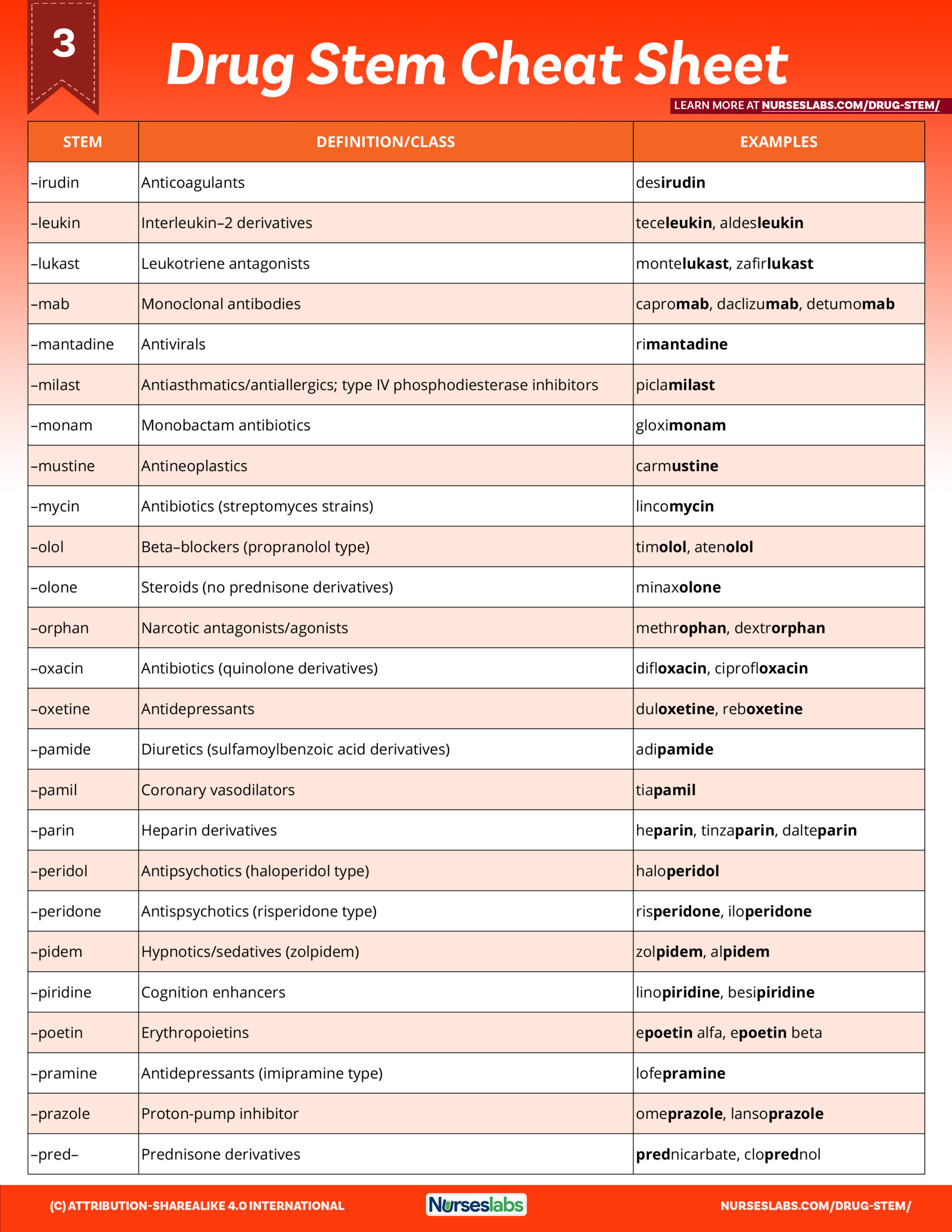As healthcare professionals, it’s important to stay up-to-date on the latest medications and their uses. That’s why we’ve put together this handy guide on pharmacology cheat sheets. First up, let’s talk about generic drug stems. These are the building blocks of medication names that can help you understand their uses and effects. For example, if you see “-olol” at the end of a drug name, it’s likely a beta blocker used for heart conditions. To help you remember these stems, we’ve created a cheat sheet with some of the most common ones. Check it out below!
Pharmacology Cheat Sheet: Generic Drug Stems
 As you can see, “-caine” refers to local anesthetics like lidocaine and cocaine (yes, that cocaine!). “-pril” is used for ACE inhibitors like enalapril and lisinopril, which are used to treat high blood pressure and heart failure. “-pam” typically indicates a benzodiazepine like lorazepam or diazepam, which are used to treat anxiety and seizures.
As you can see, “-caine” refers to local anesthetics like lidocaine and cocaine (yes, that cocaine!). “-pril” is used for ACE inhibitors like enalapril and lisinopril, which are used to treat high blood pressure and heart failure. “-pam” typically indicates a benzodiazepine like lorazepam or diazepam, which are used to treat anxiety and seizures.
More Examples of Drug Stems
 In addition to generic drug stems, it’s important to be familiar with different drug classifications. These are based on the medication’s mechanism of action and can help predict its uses and side effects. For example, antihypertensives are used to lower blood pressure and can include ACE inhibitors, beta blockers, and calcium channel blockers.
In addition to generic drug stems, it’s important to be familiar with different drug classifications. These are based on the medication’s mechanism of action and can help predict its uses and side effects. For example, antihypertensives are used to lower blood pressure and can include ACE inhibitors, beta blockers, and calcium channel blockers.
 Finally, let’s take a look at some common drug suffixes. These can also give you clues about a medication’s use. “-prazole” is used for proton pump inhibitors like omeprazole and lansoprazole, which are used to treat acid reflux and ulcers. “-mycin” refers to antibiotics like erythromycin and azithromycin that are used to treat bacterial infections.
Finally, let’s take a look at some common drug suffixes. These can also give you clues about a medication’s use. “-prazole” is used for proton pump inhibitors like omeprazole and lansoprazole, which are used to treat acid reflux and ulcers. “-mycin” refers to antibiotics like erythromycin and azithromycin that are used to treat bacterial infections.
Conclusion
By understanding these drug stems, classifications, and suffixes, you can improve your knowledge of pharmacology and provide better care for your patients. Remember, always consult with a healthcare provider or pharmacist before starting any new medications.
We hope this cheat sheet was helpful for you. Stay tuned for more resources to help you on your healthcare journey.